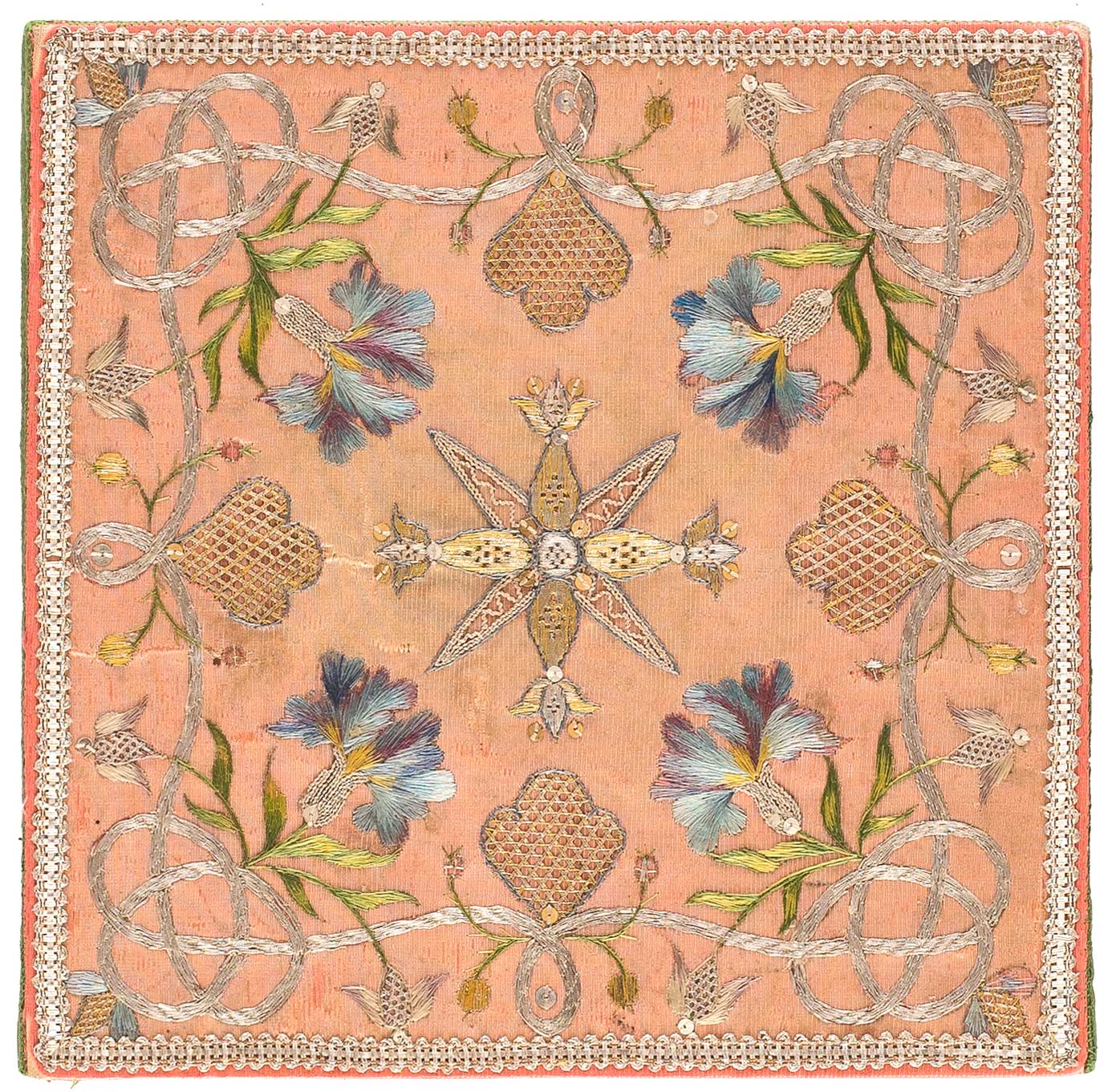
Burse.
Lithuania, first half of the 18th c.
Church of St. Nicholas in Vilnius.
18th c. Rococo colours and ideas of Classicism
The spirit of Rococo is particularly well reflected in eighteenth-century patterned silk fabrics from the weaving mills of France, above all Lyon, whose ornaments and colours were adopted by acupictors. The distinctive features of this style are light pastel colours, swirling flower garlands and diagonally meandering “rivers”. In the third quarter of the 18th century, the taste in decorative arts inclined towards classics with a predilection for clear architectural lines and a renewed interest in motifs of classical antiquity.
Liturgical textiles for altar and church decoration
Sets of liturgical vestments were often supplemented by sumptuous textile implements of the altar. The veil and burse are coverings that conceal the chalice of the Holy Mass at certain moments in the liturgy. Antependia decorating the frontal part of the mensa were made from expensive materials: silk, brocade and velvet, and were embroidered with gold and silver threads and decorated with appliqué and painting.
Embroidery with metal and silk threads
Early Rococo and Regency style embroideries boast light elegant ornaments. Silver threads are laid and couched with silk stitches. Coloured silk threads are used for shorter and longer straight stitches, thus allowing picturesque colour transitions.
